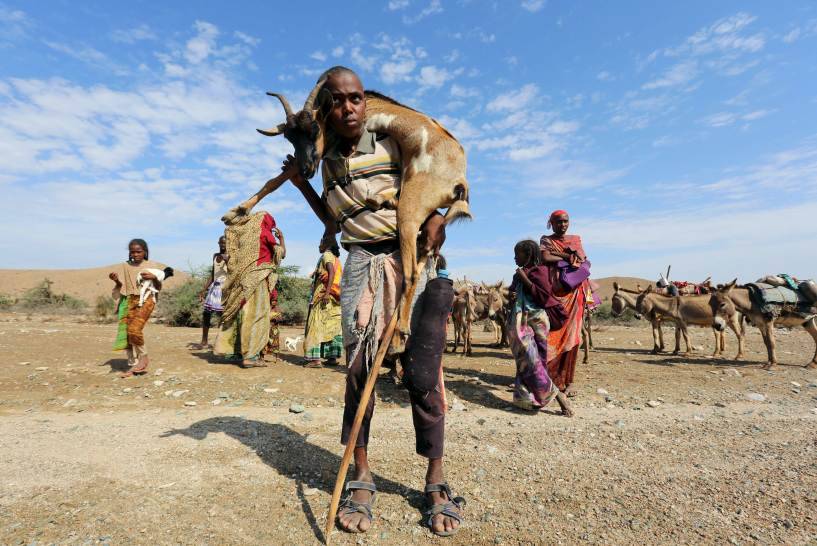Aug. 15, 2022 (GIN) – A U.N.-chartered vessel has been loaded with humanitarian food grain for Africa, in a first step toward releasing much needed food aid that had been trapped in the Ukraine.
The vessel will carry 23,000 tons of grain for Ethiopia, Somalia and Kenya as part of a U.N.-backed plan to move the grain trapped by Russia’s war on Ukraine and help relieve a global food crisis.
The three East African nations had been enduring the worst drought in in four decades.
The sub-region was also affected by three exceptionally wet seasons, bringing widespread floods, displacement, and a locust outbreak that was the worst in 25 years in Ethiopia and Somalia, and in 75 years in Kenya.
This exceptional series of consecutive drought and flood shocks has had a devastating impact on agriculture, rangelands, and water resources, leading to a sharp decrease in food availability and food access due to food production shortages, increases in staple food and water prices, and erosion of livelihoods, which in turn are driving an upsurge in food insecurity and malnutrition.
“The wheat grain will go to the World Food Program’s operations in Ethiopia,” U.N. spokesperson Stephane Dujarric told the Voice of America.
It’s the first food delivery to Africa under a plan brokered by the UN and Turkey in late July to unblock grain trapped by Russia’s war on Ukraine and bring relief to millions worldwide.
After being loaded with wheat, the ship MV Brave Commander will travel to Djibouti, where the grain will be unloaded and sent to Ethiopia, according to the United Nations.
About 20 million tons of grain had been unable to leave Ukraine since Russia’s February invasion of the country. Ukraine hopes to increase its maritime exports to more than 3 million tons of grain and other agriculture products per month in the near future.
Meanwhile, two more ships left from Ukraine’s Black Sea ports Saturday, said Turkey’s defense ministry. So far, 16 cargo vessels have left the county under the U.N.-brokered agreement.
Ukraine’s infrastructure ministry said Saturday that 16 ships carrying 450,000 tons of agriculture products had departed from Ukrainian sea ports since early August under the deal, which ensured safe passage for the vessels.
Across the region, at least 19.4 million people are affected by the drought that began in October 2020. At least 18.6 million people across Ethiopia, Kenya and Somalia are living with acute food insecurity and rising malnutrition. They could number 20 million by September.
Call it by what it is – a national disaster, wrote the Addis Standard, a local paper in Ethiopia. At least 7 million livestock—which families rely upon for sustenance and livelihoods—have died across the region since October 2020. Consequently, children have less access to the milk they need. Across the three countries, malnutrition rates are rising: more than 7.1 million children are acutely malnourished, including about 2 million who are severely acutely malnourished, according to UNICEF.
More than 11.6 million people cannot access enough safe water for drinking, cooking, and cleaning. Many watering holes have dried up or become unsafe, heightening the risk of water-borne diseases and increasing the risk of infections. Water shortages are worsened by the heat, which is forecast to continue until September 2022.
Somalia, water prices have increased up to 72 per cent since November 2021. Women and girls walk farther to access water—often up to double or triple the distances they would have to walk during a regular dry season— exposing them to dehydration and violence. Water shortages are leading to poorer hygiene in health facilities and schools.


